Travelogue: Rapa Nui – Highlights of Day 5 (continued) + Days 6 & 7
Te Pito Kura the magnetic stone, Manavai plant enclosures, Hare Moa stone chicken coops and Anakena Beach.
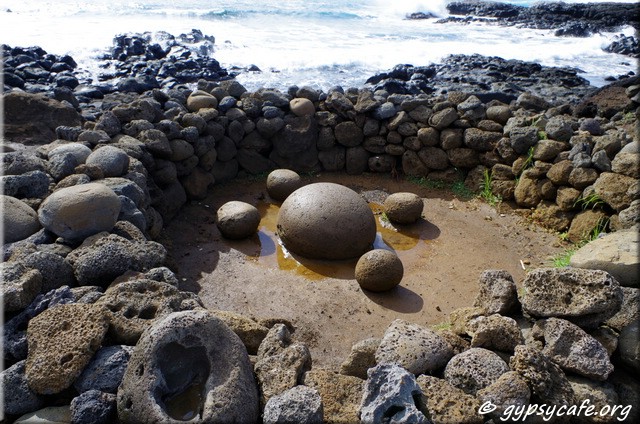
Right next to Paro (the toppled moai) I found a stone enclosure with a large stone in the centre and four small stones surrounding it. The smaller stones are “seats” and people can sit here and place their hands on the large stone to absorb the energy. The evening before I was told about this place and that the magnetism here causes compasses to spin uncontrollably. Also, according to my source (at the B&B) – when she visited the site on a trip to the island a few years before, it was demonstrated to her that a stationary car with its engine turned off, rolls upwards against a slight incline as soon as the hand-brake is released – the magnetism of the area being so strong. I joked to her that maybe that was the reason why I had been drawn to visit the island from half-way across the world.

A distance further I came upon another manavai – they can be found all over Rapa Nui. The entire island is like a huge archaeological site and the more you explore the more you discover (on foot especially).
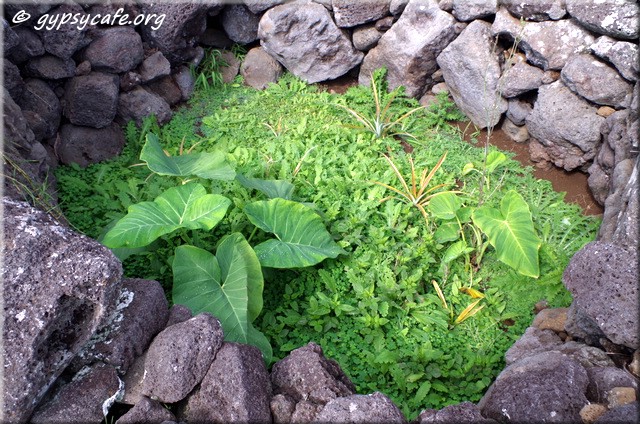
Continuing along the coast, this area was blissfully scenic. Along the way I encountered a large Hare Moa – a large stone chicken coop (below).
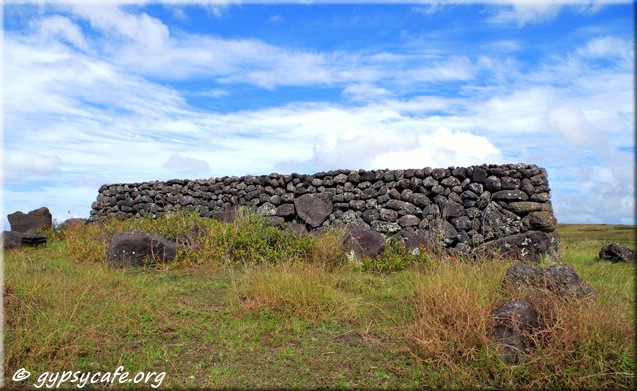
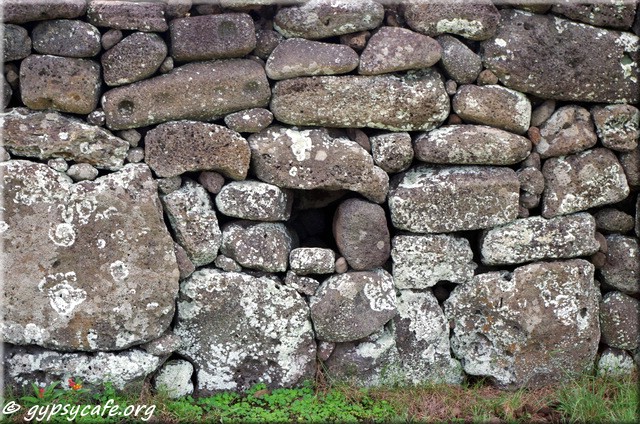
By now the sun was baking down and this day was the warmest I had experienced thus far, contrary to all forecasts. I passed various points of interest as I went along, including pastures, local fishermen and a couple of homesteads. Eventually I found myself back on the main road again and I was starting to look forward to reaching Anakena, Rapa Nui’s largest beach, where I would take a breather.
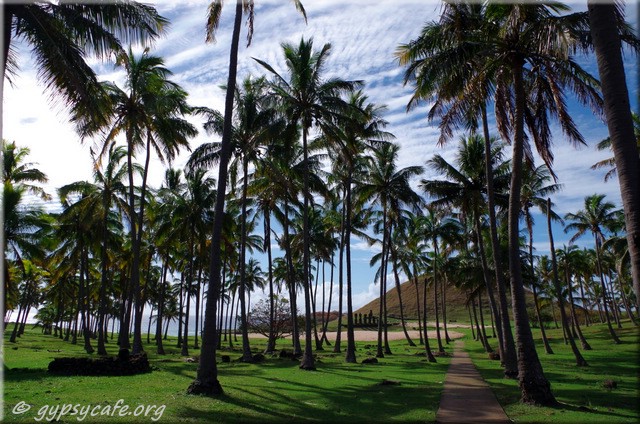
Arriving here was a great feeling and according to my map I had covered around 12 kilometres that morning. I bought a refreshing cold drink from the kiosk and after relaxing for a while explored the area further, finding another petroglyphs garden with various large (but unfortunately fading) examples, encapsulating some of the island’s ancient mythology.
I couldn’t stay too long though as it was already early-afternoon and I still had a long way to go, but Anakena Beach was pure paradise.
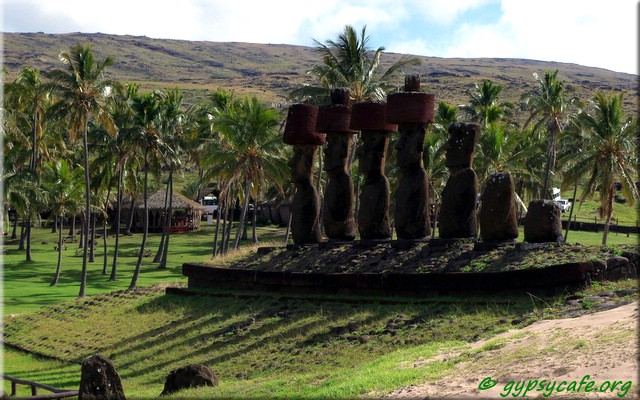

People were bathing and swimming in the ocean and relaxing on the beach. Once sufficiently refreshed and after taking photographs, I located the path for my onwards journey and left Anakena behind.
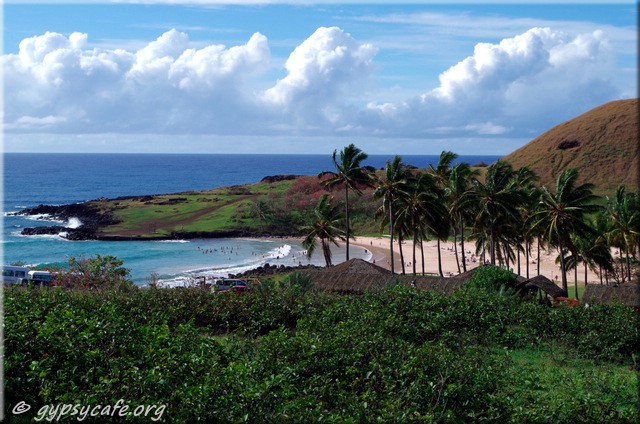
…and further behind.
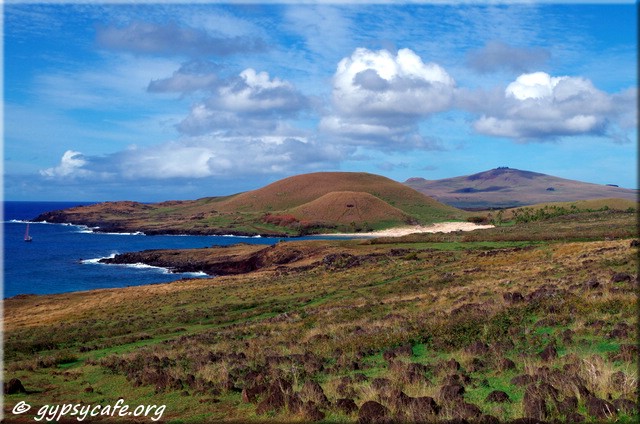
Until I found myself in increasingly remote parts of the island.
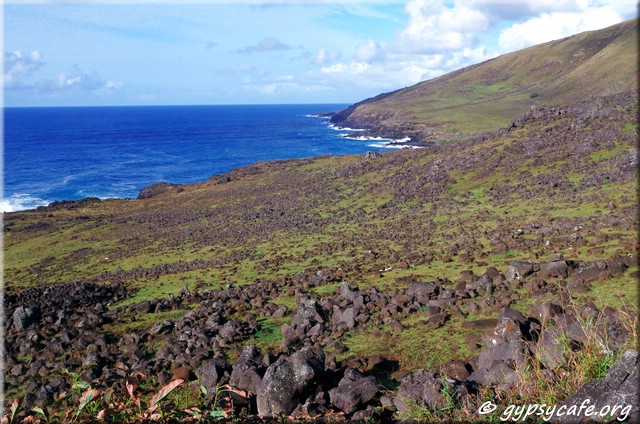
…with only occasional cows and horses for company.
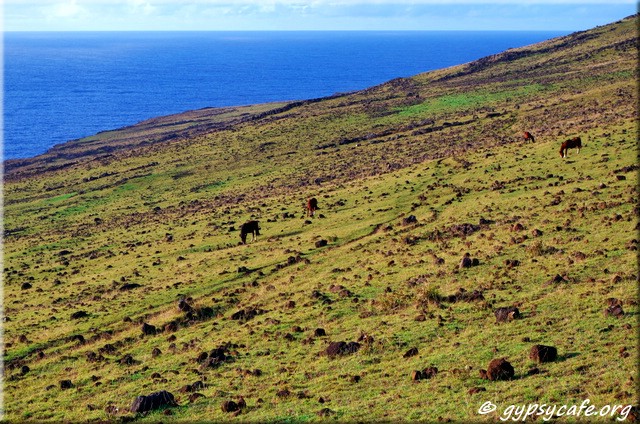
Day 6:
Dark and overcast. I decided to visit the Hanga Roa Museum which provided a comprehensive overview of the history of Easter Island, as documented, reported and experienced by explorers and visiting archaeologists over the years. The rest of the day I spend relaxing at coffee shops, visiting a few curio shops and accessing the internet for the first time during my stay.
I was somewhat exhausted from several days of hiking, probably mainly due to the day before, covering about 25 kilometres in total. While I was hiking around the north coast the previous day, dusk and eventually nightfall caught up with me and I had to path-find the last few kilometres. At that point I was in less remote parts again and horse paths led me across fields along stone walls and to country gates, which had to be scaled to make headway. The several farmsteads I crossed were deserted, confirming that 95% of Rapa Nui inhabitants live in town – farmers would drive out to the farms during the day.
Earlier on though, while being further up the coast, the remoteness and isolation was palpable, with only horses and cows for company, observing me from a distance. I did ponder the question at the time, of why Rapanuis were all “huddling in town”, the bones I witnessed in caves a couple of days before probably stimulating my imagination. Were they scared of something “out there”? Later, this question (the bones part) was also answered when I was told that the smaller bones in caves were most likely those of stray dogs dying from their wounds after fighting with each other or getting lost and dying from hunger.
It rained for the last hour or so of my walk, pouring at some stages, and when I reached a gravel road which would take me to the main road it was already dark. I had to walk wide berths around large pools of water, sometimes into fields to get around them, the pools having grown to small dams in the recent showers. At 8pm I finally reached a tar road. I was very fortunate to have a car pass within 10 minutes and a Chilean family on holiday was kind enough to stop their rental car and give me a lift back to town.
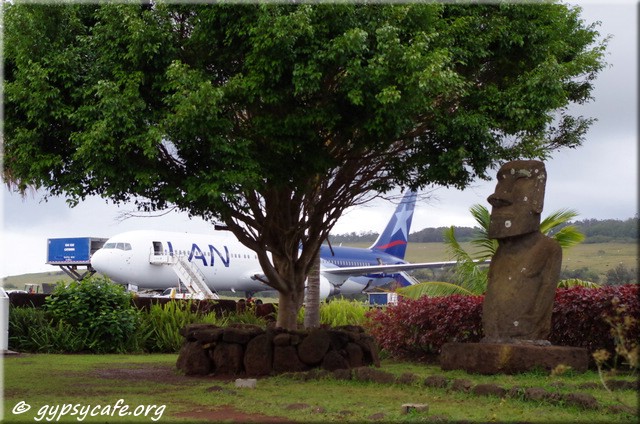
Day 7:
It has been said that in every destination you should always leave a few places of interest unexplored, just in case you make it back there one day. I saw many, if not most of the highlights of this stunning island, naturally stumbling upon many off-the-beaten track sights. Although seven days are recommended as a good average amount of time to spend on Easter Island, I didn’t quite feel ready to leave. I felt very satisfied though, but there was one place I wanted to make it to, just in case I did not return one day – this was the extinct volcano Rano Kao, meant to be one of the most spectacular sites on the island, where famously the birdman competition participants set off from, to swim around the two little islets when this competition was still practised.
Rano Kau being situated next to the airport and landing strip, which is situated right next to Hanga Roa meant it would probably usually be a bit “touristic” and so I left it for last. This morning being the day of my departure, I hoped to finally fit it in before my flight. After checking-in my luggage early at the airport I attempted to make my way by foot up to Rano Kau during pauses in the rain, but it was not meant to be – the rain caused me to beat the retreat – twice. I had to humbly accept that I was given a reprieve by the weather already, allowing me to see much more than initially anticipated, and to be appreciative of that fact. On take-off however, as the plane gained altitude, I caught a clear glimpse of the crater from above through an opening in the clouds, fulfilling my last wish. We settled into the flight and when the cabin hostess came around to offer drinks (no premium whisky this time), she excitedly enquired to the passengers in my general area: “Did you like Rapa Nui? Could you feel the energy?”
FIN
Jean-Jacques
**
Exploring Easter Island (June 2015)
Photographs and text by Jean-Jacques Montagnier
Copyright © 2015 – All Rights Reserved – Gypsy Café
**
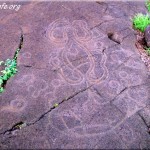

2 Comments
Pingback: Exploring Easter Island – Day 5 – Part 1 : Gypsy Café
This was quite a journey! You captured some awesome photos of the statues. It was good to see the one with people for the perspective on the size. I wonder what could topple one over considering the weight. I was most amazed by that magnetic stone story. If it could draw a car, surely it would attract the iron in the blood. It’s a little bit of a sad story of the harsh life for the animals… and loss of the trees. There must have been lots of time to think and take it all in – in total isolation on all those long hikes… imagining who passed that way before. Thank you for sharing.